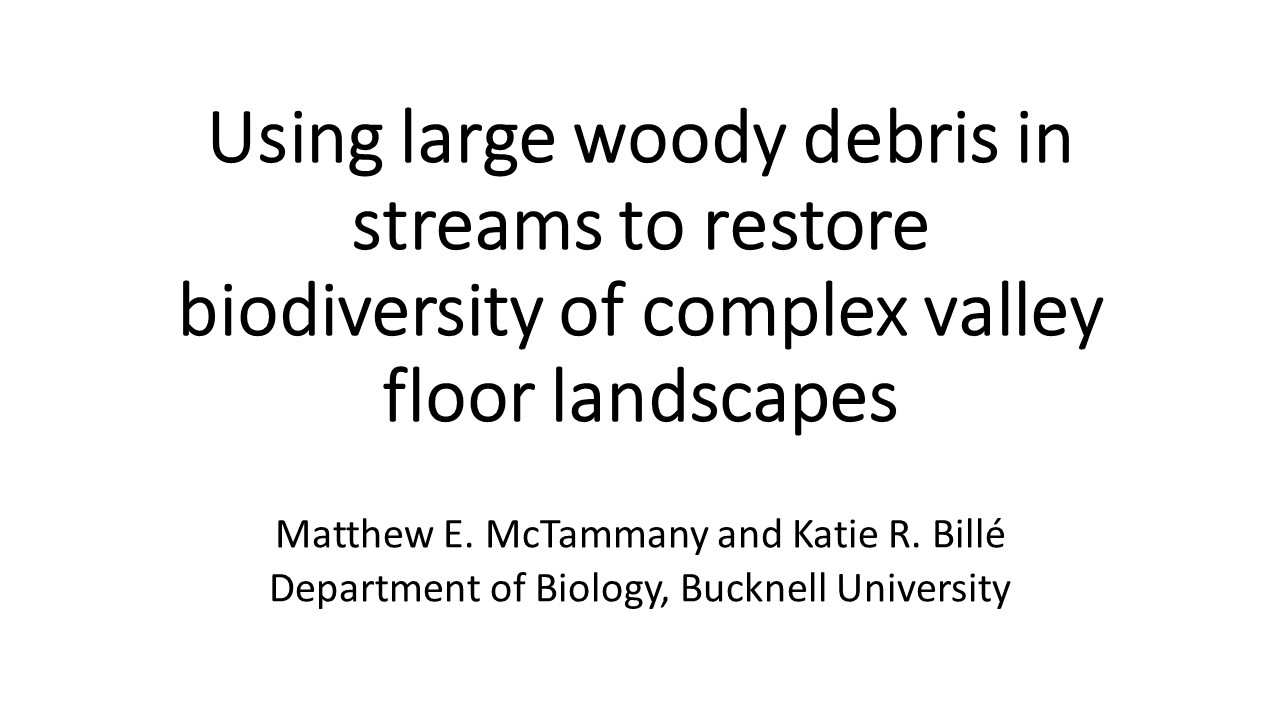Author:
Matthew McTammany
Co-Authors:
Katie R. Billé
Institution:
Bucknell University
Abstract
Valley floor landscapes contain a variety of aquatic and semiaquatic habitats that depend on interactions between microtopography and the groundwater table. Historical logging in Pennsylvania frequently used stream channels to move timber downstream to mills along rivers, resulting in catastrophic channel erosion that deepened stream channels, lowered groundwater tables, created single-channel streams, and reduced stream-floodplain connections. These hydrologic and morphologic changes reduced the number, complexity, and area of aquatic habitats across valley floors. However, restoring large woody debris to stream channels can reverse these degradation processes by retaining sediment and organic debris, building up stream bed elevations, and elevating the water table, all of which could combine to reconnect stream and groundwater with former aquatic habitats across the valley floor. Increasing the variety and area of aquatic habitats across the valley floor will likely increase local biodiversity of many groups of organisms, from plants to amphibians, and could lead to higher connectivity and gene flow of certain habitat-limited populations across the region. Large woody debris additions are being performed in several streams in Allegheny National Forest to restore natural channel processes, complex valley floor ecosystems, and corresponding biodiversity. This talk will explore some of the possible ecological benefits of large woody debris additions for aquatic communities in Allegheny National Forest and will consider protocols for assessing biodiversity in restored valley floor landscapes.
